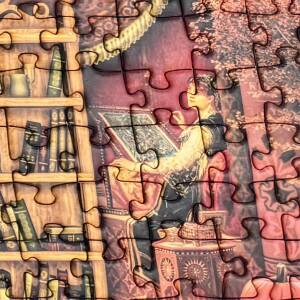Ninekirks
No one knows why this little church is called Ninekirks; its official name is St Ninian’s.
And I have no idea why we have never been to see it, as it is only a few miles from home and we pass the car park and the footpath sign several times a week, as we travel along the A66 to Penrith. Perhaps the answer is that we had no idea it was there . . . until I read something about it in the local paper this morning.
We had to find it!
St Ninian’s is in the middle of nowhere. It is reached by a long grassy track at the side of fields – probably about a mile. As you walk you realise you are following, but are way above, the River Eamont. Eventually you arrive at the end of the track and there is the church below you. It stands in fields, in a bend in the river. A lovely setting, but nowhere near any habitation. So, not surprisingly, it is no longer used as a church; is known as a ‘redundant church’ and cared for by The Churches Conservation Trust. And beautifully kept it is too. (The map shows the exact spot where the church is.)
For anyone interested here is a brief history of the church
There is evidence of settlement on this spot since Roman and Saxon times and there was almost certainly a medieval village and church there. By the 17th century the focus of the village had moved to Brougham, around where the Castle and Hall are now, and although there was still a hamlet around the church, the church itself had fallen into disrepair.
Then Lady Anne Clifford, who had acquired much of Brougham parish, started a programme of restoring its buildings, including Ninekirks. She had the church completely rebuilt and her restoration work is recorded in the plasterwork above the altar, in a wreath with her initials AP (Anne Pembroke the Earl of Pembroke was her second husband) and the date 1660.
Twenty years later a James Bird, who had managed to buy up the Parish, cleared Brougham village and its hamlets, including those around the church, so he could create a deer park for himself. The villagers were ‘transferred’ to Eamont Bridge. Hence the church stands alone.
Today the church remains almost unaltered since the 17th century. It is simple in style with whitewashed walls, mainly clear glass in the windows and a stone flagged floor. The oak fittings include box pews, and family pews with canopies, an elegant screen, and a three-decker pulpit.
It’s an absolute gem (perhaps look large) and I am so glad we found it.

Comments
Sign in or get an account to comment.


